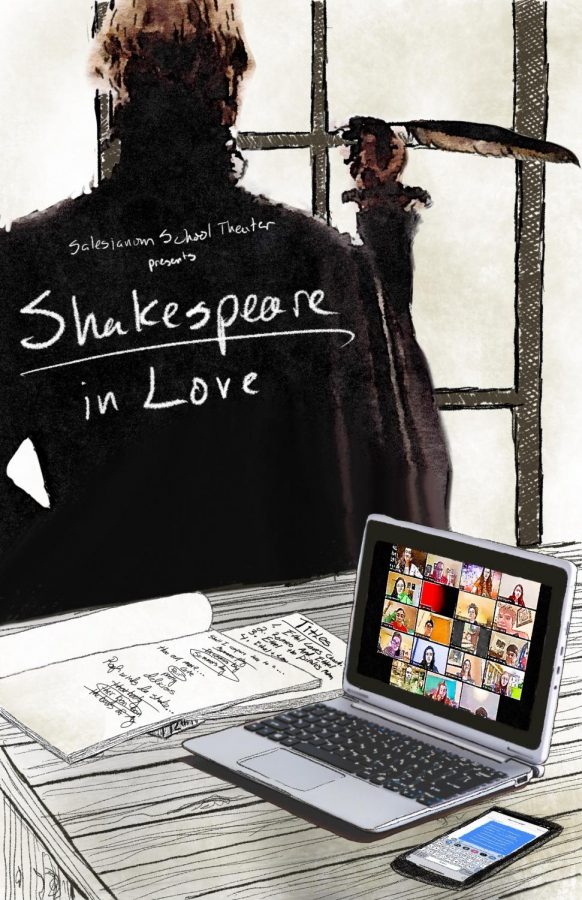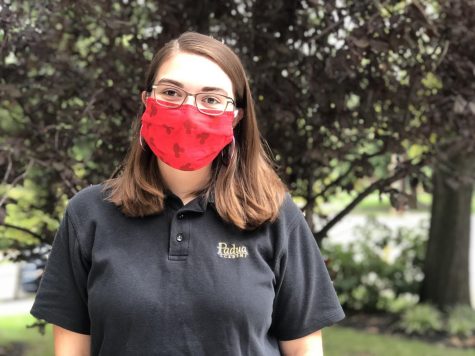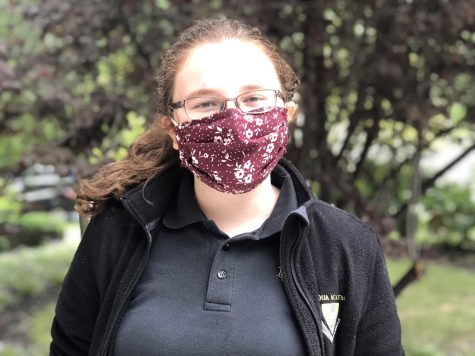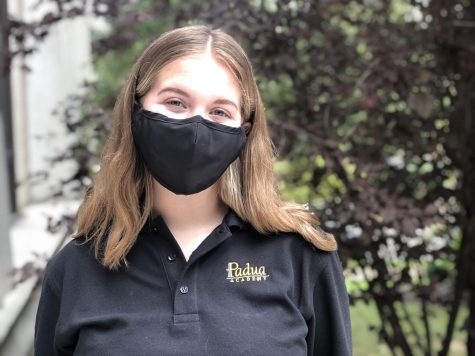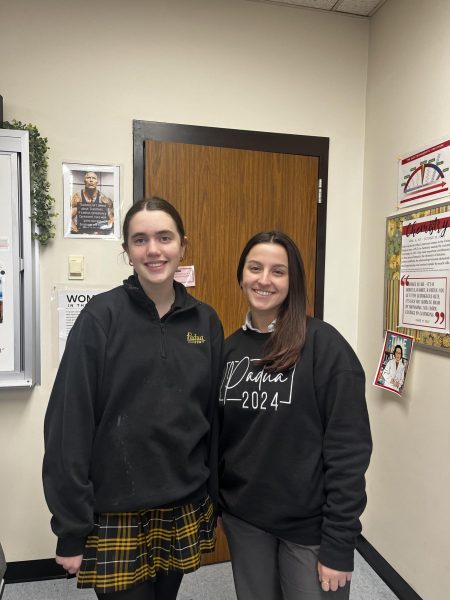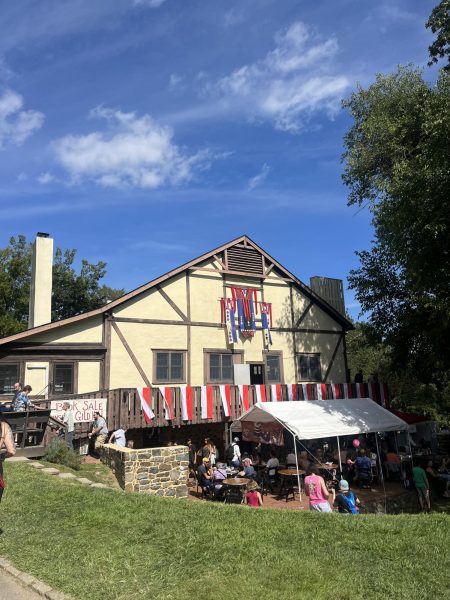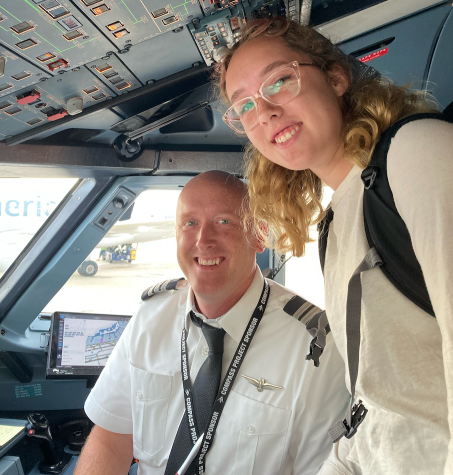How We Performed a Play in Quarantine
Promotional Poster for “Shakespeare In Love.” This poster was created by our director, who included William Shakespeare writing in the background, a screenshot of our rehearsals on the computer, and rough drafts of Shakespeare’s writing.
Two-and-a-half months ago, I became the Stage Manager for Salesianum Theatre’s spring play, Shakespeare In Love. I had no clue that the coronavirus would hit, making this production the most interesting play I have ever done.
Shakespeare In Love is the story of how William Shakespeare wrote the play Romeo and Juliet. During this time he falls in love with a betrothed noblewoman, Viola De Lesseps, who wishes to be an actor although women aren’t allowed to act.
I first heard about this play during Salesianum’s winter musical, Ragtime. I was an actor in this production, but knew I wanted to take a staff position in my next show. I asked to Stage Manage months before auditions even began. I was beyond excited when the director, Aaron Bogad, told me I could have the position.
To explain for non-theatre folks, a Stage Manager is the go-between for the actors, light crew, sound crew, stage crew, producers, and costumers to the director. Basically, my job is to keep up communication between every department.
During rehearsals, I write rehearsal reports, which log attendance, everything we accomplished, and things to note for later. I also read the lines of actors who are not present, keep track of what page we are on in the script, email rehearsal information to the cast, and generally make sure things run smoothly. In some theatres, stage managers are so important during rehearsals that actors aren’t allowed to speak directly to the director at all, only through them.
During performances, my main job is calling cues. This means I have a headset on and let the lights, sound, projection, and stage crews know what they have to do and when. I give them a warning a few seconds before a light or scene change and then tell them when to go. I also let the cast and crew know how long it will be before the play begins and coordinate with the producers for when to end intermission.
Because the performance of Shakespeare In Love was moved to online, many of my duties have shifted. I haven’t been too upset about this because it lets me focus on my favorite aspects of the job; writing rehearsal reports, coordinating rehearsal times, and helping run rehearsals. My job description has also come to include choosing which scenes to record and keeping track of which actors should be brought to the breakout room to tape.
Shakespeare In Love had a rocky start for me. I caught the flu during the closing weekend of Ragtime and had to miss the first audition. I probably should have missed the other audition, but I was determined to go. I pushed myself through it, and I’m so glad I was able to make it. It was amazing to see behind the scenes of an audition at Salesianum and see how they cast their shows.
The first table read of the performance happened before the coronavirus was a big concern in Delaware. A table read is when the cast and staff sit down together to read the script for the first time, usually during the first rehearsal. I wish I had taken more time to soak in the experience because this would be the only in-person rehearsal we had. I remember the last time the acting kids piled into the Jersey bus that would drive us down to Salesianum. I remember walking through the halls, trying to figure out where rehearsal would be. I remember helping organize the chaos of the table read as the cast and staff sat in a large circle to read through the script. I remember the heat of the room and everyone’s excited energy.
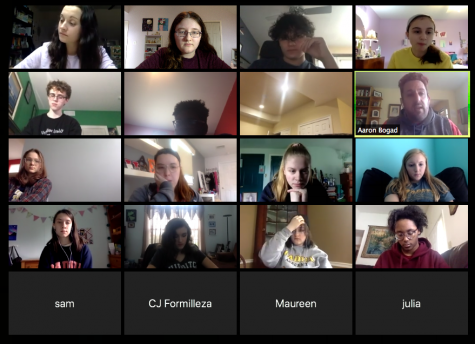
It was so nice to sit with all of my acting friends, chatting and hanging out after a long day of school, discussing what the costumes and set will look like. I had no clue that this would be the last time I would have this experience before the next school year.
The day we heard that we would have to stay home for two weeks wasn’t too upsetting. We thought that we could just rehearse online for a few days then come back and pick up where we left off.
But, it soon became evident that this wouldn’t be the case. I thought we would cancel the play, which would have been easy after just a handful of rehearsals, but we decided to keep going and see if we could make it work. And we did make it work. Who could have imagined that we could perform an entire play over Zoom?
As with all productions at Salesianum Theatre, the first month was spent diving into the historical context of the play. This portion of rehearsal was pretty easy to do virtually. The main issue was getting actors to participate in discussions. As with most Zoom discussions, it can be difficult for teachers to keep up the talk when students are not physically in the room with them.
After the historical context portion of the rehearsal process was done, we were met with an onslaught of obstacles. How would we film the performance? How would we do backdrops? How would we do special effects like kissing and sword fights? Could a virtual performance even be done?
After a few days of planning, we had everything figured out. The actors mastered the virtual backgrounds setting on Zoom, setting up a greenscreen in their homes using a blanket or taped pieces of paper. We spent several rehearsals finding images for each scene.
The scenes were shot in a breakout room in Zoom where only the actors in each scene were present. Before shooting, the director explained where the other actors were on his screen so they could look at each other. He then recorded his screen and whatever happened in one take was what they would use in the final video.
For special effects, everyone became really excited by the idea of using puppets. In Shakespeare In Love, there are many scenes set during rehearsals and performances of a Shakespearian play. During these scenes, the characters would hold a puppet to show that they aren’t the normal character; instead they are that character playing another character.
To help clarify the setting of each scene and explain important actions, we decided to have a character read them aloud. This helped fill in the gaps of what could be accomplished over Zoom.
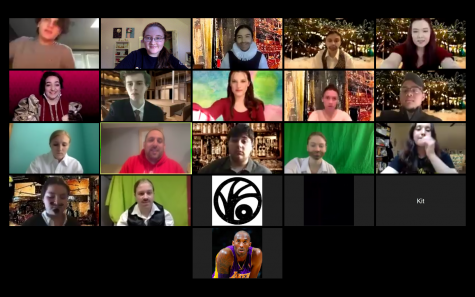
Each actor got to come up with their own version of an Elizabethan costume using the items they had at home. Somehow, they all came out looking great. Many of the girls playing male characters got really into it and drew on a beard or mustache.
One obstacle that was possibly the most difficult was how to act when you weren’t in the same room as the other actors. It can be difficult to muster up anger, sadness, or joy when you are alone in a room and speaking into a computer. But, practicing showed us the skill that professional actors like Jeremy Piven who work with greenscreens and voice acting need to possess.
Within the next few days, we will finish taping all of the scenes. Then, we will have to move on to the post-production phase of this project. Members of the stage crew and staff have volunteered to help stitch together the scenes we taped, clean up the audio, add in special effects, include background music, and insert recordings that were taken of actors doing their lines separately. This process should take about 15-20 hours of work, but it will be all worth it. For the students who help with this process, they will learn about post-production, a side of the theatre business that they haven’t learned about during previous live performances. And, it will elevate the recording of the show beyond a screen recording of actors reading their lines.
This whole experience of putting on a performance through Zoom has been nothing like I could have ever imagined. It’s so funny to think back on that first read-through and how little we knew. Although I was not acting, this experience has taught me to be adaptable, think creatively, problem-solve, and enjoy the process of making something without knowing how well the final result will turn out. I am extremely proud of the dedication and hard work of every actor and staff member who helped make this play a success.

